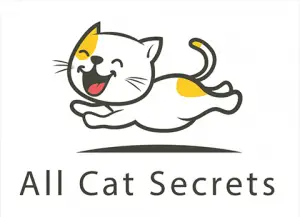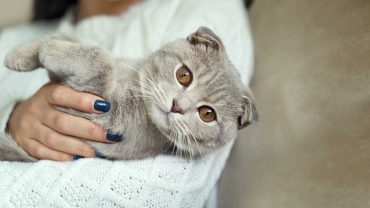If you own both male and female cats, you may have observed that the male cat loves petting and cuddling more than his female companion.
And like any curious cat owner, you may have wondered whether this behavior is intrinsic or acquired.
But are male cats really more affectionate than female cats?
The perfect answer to that question is “Not necessarily.” It’s logical to assume that a neutered male cat will behave better than an unneutered one. That’s because neutering mellows down a cat and deprives it of the urge to mate, which makes the cat more attached to its owner than other female cats within the household.
However, you cannot judge the level of affection of your cat purely on gender grounds. And as you shall find, there are numerous other factors that could make one cat more affectionate than the other, even if the two felines live together in the same house.
Table of Contents
More about Neutering
Neutering is the surgical removal of the testicles of a male animal so that it’s unable to reproduce. The opposite is spaying, which is the removal of the ovaries of a female animal.
Besides preventing unwanted littering, the following are other reasons why some pet owners prefer neutered and spayed cats.
1. Mellows down a cat – Neutered or spayed cats are less territorial, less aggressive, and more friendly towards humans and other cats.

2. Neutered/spayed cats don’t wander too far away from home looking for mates – As both procedures eliminate the urge to reproduce, neutered and spayed cats don’t stray a lot.
That way, they won’t run into accidents or violent confrontations with other cats, wild animals, and people within the neighborhood.
3. Cost-effective in the long run – If you can only afford to keep one or two cats and you’re okay with it, then you might consider neutering or spaying the cat. It makes more economic sense to take care of a few cats than several of them.
4. Controlling cat population – Neutering and spaying are the surest and more human ways of controlling the population of cats within a particular region. The other method, which isn’t so human, is euthanasia.
When the population of cats spirals out of control in a home, the competition for food, attention, and territory will see some stray and probably never come back.
- EASY TO USE, IMPACTFUL RESULTS: Collect a sample, package it up, and send it securely back. Just register, swab, return with the...
- MOST COMPREHENSIVE BREED & TRAIT: Our test distinguishes over 20+ distinct breeds and 50+ trait markers with the most...
- SCREEN FOR 40+ GENETIC DISEASES: Get peace of mind by screening for 64 health markers associated with 43 diseases for which your...
Last update on 2024-10-04 / Affiliate links / Images from Amazon Product Advertising API
As you can observe, the reasons for neutering and spaying are more or less similar. And so are the effects.
And since the procedures interfere with their reproductive hormones significantly, a neutered or spayed cat ends up more drawn to its human owner than other cats of the opposite gender.
In fact, considering that you are their new center of attraction, the two cats may end up competing for your attention.
So, on neutering and spaying, the verdict is that both procedures make a cat more affectionate towards humans. The equation suddenly changes if you compare neutered males vs. unspayed females or unneutered males vs. spayed females.
Possible Theories on Why Male Cats Are Considered Friendlier
Now, we’ve already seen that neutering or spaying will make your cat more drawn to you than it is to other cats in the family.
But there are a few other theories that might help to explain why male cats are more affectionate than females.
1. Intrinsic Behavior
Those who advance this theory believe that aggression could be a quality that female cats inherited from their wild relatives.

Remember that while humans have domesticated pets for thousands of years, these animals are yet to shed off most of their natural and intrinsic behaviors.
For instance, a cat has a strong prey drive that kicks in the moment it picks up the scent or sound of a mouse in the house. The cat may not necessarily be interested in eating the rodent. Instead, it just wants to hunt down the rat and kill it, chase it away, or otherwise assert its dominance.
Now, female aggression is another trait that cats share with their wild cousins. As a female cat is more in charge of protecting the kittens, it’s naturally wired to be more cautious and less trusting.
You’ll notice that even if you just offered food to a female cat a minute ago, coming too close to its kittens might earn you a snap or a bite. On the other hand, male cats mostly get aggressive during the mating seasons (in the case of unneutered males) or when defending their territories from interlopers.
2. The Sense of Motherhood
A female cat with a new litter is more concerned about supplying the needs of its young ones than sitting on its owner’s laps and purring the day away. And this is a behavior that’s common among most mammals.
The cat has to spend time cuddling its young, feeding them, and staying close-by to offer protection when required. Perhaps, the only time that the cat will get close to you is during mealtime.
However, this doesn’t necessarily qualify the female cat as more aggressive than male cats. It simply implies that the cat is so deeply committed to the welfare of its young that it has little or no time for its human friend.
3. Testosterone
This theory ties back to neutering. Some experts believe that male aggression is tied to testosterone.
And since neutering prevents the cat from secreting high levels of the hormone, neutered cats tend to be cuddlier than their unneutered counterparts. But this theory seems to borrow from the assumption that all male cats must be neutered, which isn’t always the case.
- Reversible Design & Organic Catnip: This wide infinity cat lounge doubles as a scratcher with 2 textured sides for extended...
- Eco-Friendly & Stylish Scratcher: Made from recycled cardboard & non-toxic glue, this large scratcher keeps cats entertained &...
- LONG LASTING CORRUGATED CARDBOARD CAT SCRATCHER: Each piece of Petfusion's cat scratchers for indoor cats is connected for greater...
Last update on 2024-10-04 / Affiliate links / Images from Amazon Product Advertising API
Common Factors That Affect How Affectionate a Cat Is
1. Personality
All cats aren’t made equal. And when it comes to showing affection to their human friends, it all comes down to a cat’s individual personality.
While some cats are naturally aloof and withdrawn, others are more attention-seeking and love to be cuddled by their owners.
2. Environment
The environment where a cat lived before you acquired it also plays a significant role in defining the cat’s emotions. Cats that are rescued from abusive homes tend to be highly aggressive, as are those that spent a greater part of their formative years straying.
It gets worse if the cat has developed a full-blown post-traumatic stress disorder. Anything that reminds the cat of its previous abusive environment will likely cause the cat to turn aggressive and demonstrate various forms of irrational behavior.

3. Socialization
Cats are fairly social animals and as such, they deserve enough mental and physical stimulation.
A cat that isn’t well-socialized will be less trusting of humans. So, despite how busy you are, always take some time to socialize with your feline friend.
Alternatively, you can offer the cat enough toys for mental and physical stimulation when you’re gone. And if the neighborhood consists of many stray cats, insist on keeping your cat indoors.
4. Age
Old age comes with its own challenges, and mood swings are one of them.
Older cats are somewhat hard to please and may choose to remain grumpy the whole day for no apparent reason. Sadly, there isn’t much you can do about it.
Still on age, you should establish the age that your cat was neutered or spayed. Experts advise undertaking either procedure when a cat is still young. As soon as a cat mates for the first time, it will usually display some level of aggression even after neutering or spaying it.
- YOUR ALL-IN-ONE PET MONITOR — With Petcube Play 2 Wi-Fi pet cam, check on your pet anytime from your phone with 1080p HD video,...
- PLAY WITH LASER FROM YOUR PHONE — With a built-in pet and human-safe laser toy, controlled from your phone, or set to autoplay...
- CHAT WITH YOUR PET — With high-quality 2-way audio, you can hear and speak to your pet when away, and they can reply back. Enjoy...
Last update on 2024-10-04 / Affiliate links / Images from Amazon Product Advertising API
5. Breed
The breed also determines how aggressive or affectionate a cat can be to its owner.
When looking for the most affectionate cat breeds, you may consider Ragdolls, Siamese, Abyssinian, Scottish Folds, Burmese, Tonkinese, or Birman cats.
6. Disease or Injury
Lastly, a cat may be aggressive if it’s sick or has a physical injury. If the cat is injured, you can expect signs like inflammation or limping.
A cat suffering a physical injury will avoid coming close to you as it suspects you’ll touch it on the sore place.
For sickness, observe for significant changes in the cats feeding, litter, and social habits.
For instance, is the cat constipated or dehydrated? Does it use the litter more frequently than normal? And besides avoiding you, does the cat also sleep most of the time? These are some of the tell-tale signs of a sick feline, and reasons enough to schedule a visit to the vet.

How Can I Choose An Affectionate Cat?
Getting an aggressive cat to show affection to you is no walk in the park. It may require months of rigorous training and socialization.
Thankfully, there are tips you can implement to choose an affectionate cat.
1. Choose a breeder wisely
Always insist on buying a cat from an ethical breeder. That means the breeder must be registered, accredited, and a member of local reputable pet associations.
Before buying the cat, find out from the breeder whether the cat has any significant social and behavioral problems.
If you are adopting a cat from a shelter, avoid rescue shelters unless they’re professionally run. Either way, insist on a detailed profile of the cat’s historical and medical background.
2. Don’t buy too young kittens
A kitten shouldn’t be separated from its mother until it’s at least 12 to 14 weeks old unless it’s a hand-reared kitten.
But remember that hand-reared kittens are often difficult to wean, and may require you to incur additional costs enlisting professional veterinary services for the same.
3. Visit the cattery beforehand
This is a no-brainer. Always make prior visits to a cattery before buying a cat.
Assess the general hygiene and sanitation standards of the cattery. Above all, check if the cats are happy, playful, and unafraid of humans.
If you can, carry a teaser toy and examine if the cat you intend to acquire is naturally curious and highly playful. And even after you bring the cat home, ensure it gets enough stimulation.
Final Word
Are you still wondering whether male cats are more affectionate than female ones?
As we’ve seen, numerous factors influence a cat’s temperament, and it’s never really a question of gender.
As the cat owner, the onus is on you to establish whether the cat’s withdrawn attitude is natural or certain worrying reasons are behind it.
Checkout Our Favorite Cat Products
1. Best Online Course For Cat Parents
Our favorite: The Cat Language Bible (How to Finally Understand And Speak to Your Cat) – A new form of cat to human communication that many cat owners have dreamed about… but few have actually thought possible.
2. Best Vacuum to Tackle Pet Hair
Our favorite: ORFELD Cordless Vacuum – Engineered for homes with pets. With features and tools that dig out dirt, hair and allergens everywhere your pet gets.
3. Best Immune Support For Cats
Our favorite: Tomlyn Immune Support – Best Supplement for Cats and Kittens.







